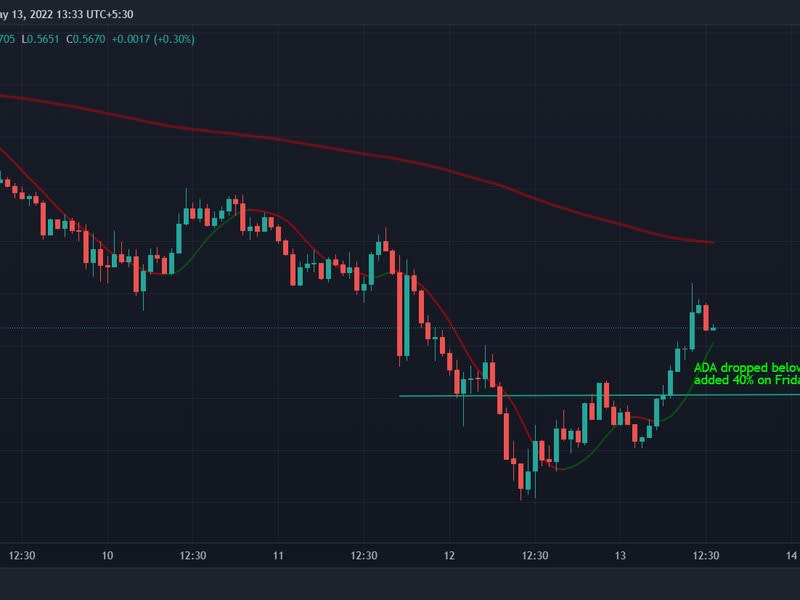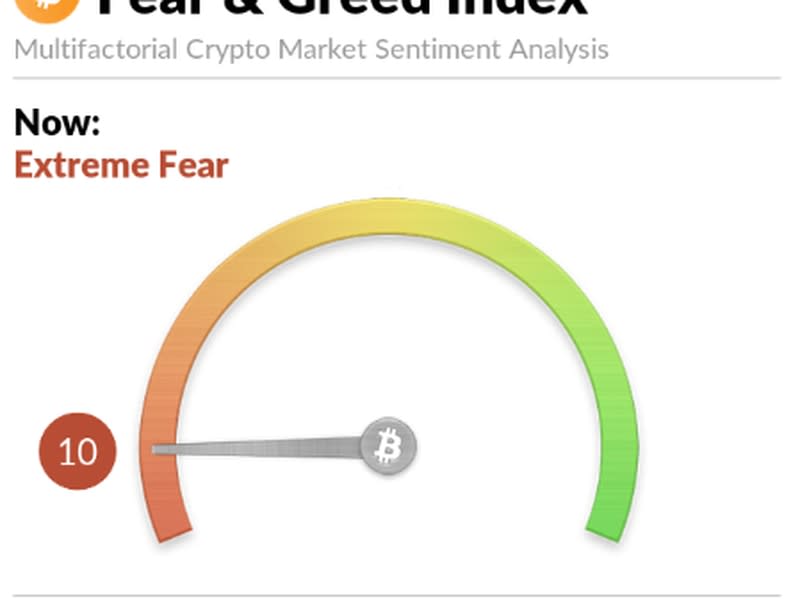Cardano’s ADA Jumps 40% to Lead Recovery in Major Cryptos, Sentiment Remains in 'Extreme Fear'
Don't miss CoinDesk's Consensus 2022, the must-attend crypto & blockchain festival experience of the year in Austin, TX this June 9-12.
Major cryptocurrencies rallied the past 24 hours, erasing some of Thursday’s slide and adding 13% to the overall market capitalization, though a gauge of market sentiment weakened from Thursday's level.
Cardano’s ADA jumped as much as 40%, leading gains among the biggest cryptocurrencies. BNB Chain’s BNB spiked 30%, Solana’s SOL added 25%, and XRP added 22% during the morning in Asia. The recovery came as bitcoin (BTC) and ether (ETH), the two largest cryptos, added over 12% each. Most of the largest cryptocurrencies rose at least 25%, with the likes of ApeCoin (APE) climbing as much as 57%.
Traders may have deemed cryptocurrencies as oversold and purchased assets after a dramatic sell-off. For the week, total market cap is down about 30%, CoinGecko data shows.

“After serious oversold previous days, altcoins rose at a double-digit pace in the last 24 hours,” FxPro market analyst Alex Kuptsikevich said in an email. “This could be both the start of an extended buying wave and a trap for the bulls.
“The cryptocurrency fear and greed index was down 2 points to 10 by Friday and remains in 'extreme fear,' but it largely ignores the optimism of recent hours. Thus, the indicator’s current low levels might also attract 'buy when you are scared' buyers,” Kuptsikevich said.

Cryptocurrencies dropped steeply this week amid systemic risks from both within the market and outside. Concern about high inflation in the U.S. hit bitcoin prices, while terraUSD (UST) – a stablecoin designed to be pegged to the U.S. dollar – dropped to a low of 22 cents. Investors took risk off the table, causing bitcoin to briefly fall to almost $24,000 on Thursday.
Part of the recovery in the past 24 hours could have arisen from what's known as a short squeeze. That occurs when traders who had bet on prices falling have to buy assets to cover their pessimistic positions, known as shorts. In a short, traders borrow an asset to sell in the hope they will be able to buy it back at a lower price and profit on the difference when they return it to the lender. If prices rise, they stand to lose money, and buying to limit their losses adds to bullish momentum.
Futures data shows 64% of traders were short in the past 24 hours and took on $266 million in liquidations, which may have contributed to a price rise amid a possible short squeeze.

 Yahoo Finance
Yahoo Finance 